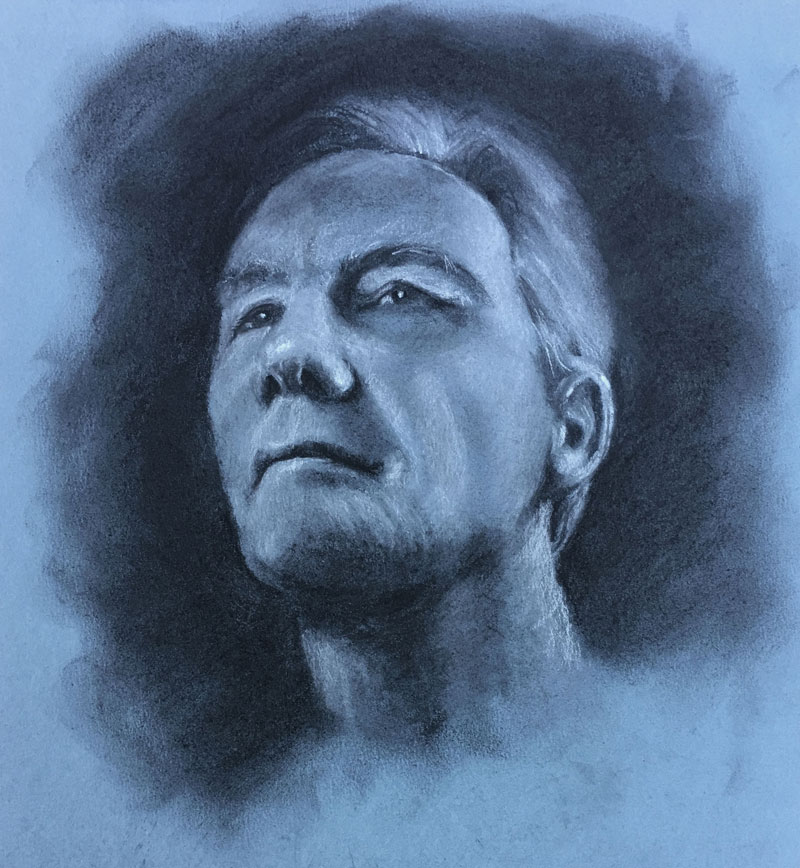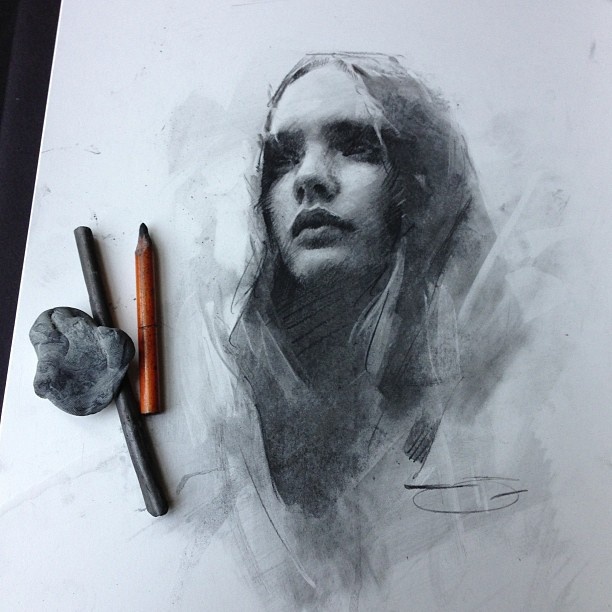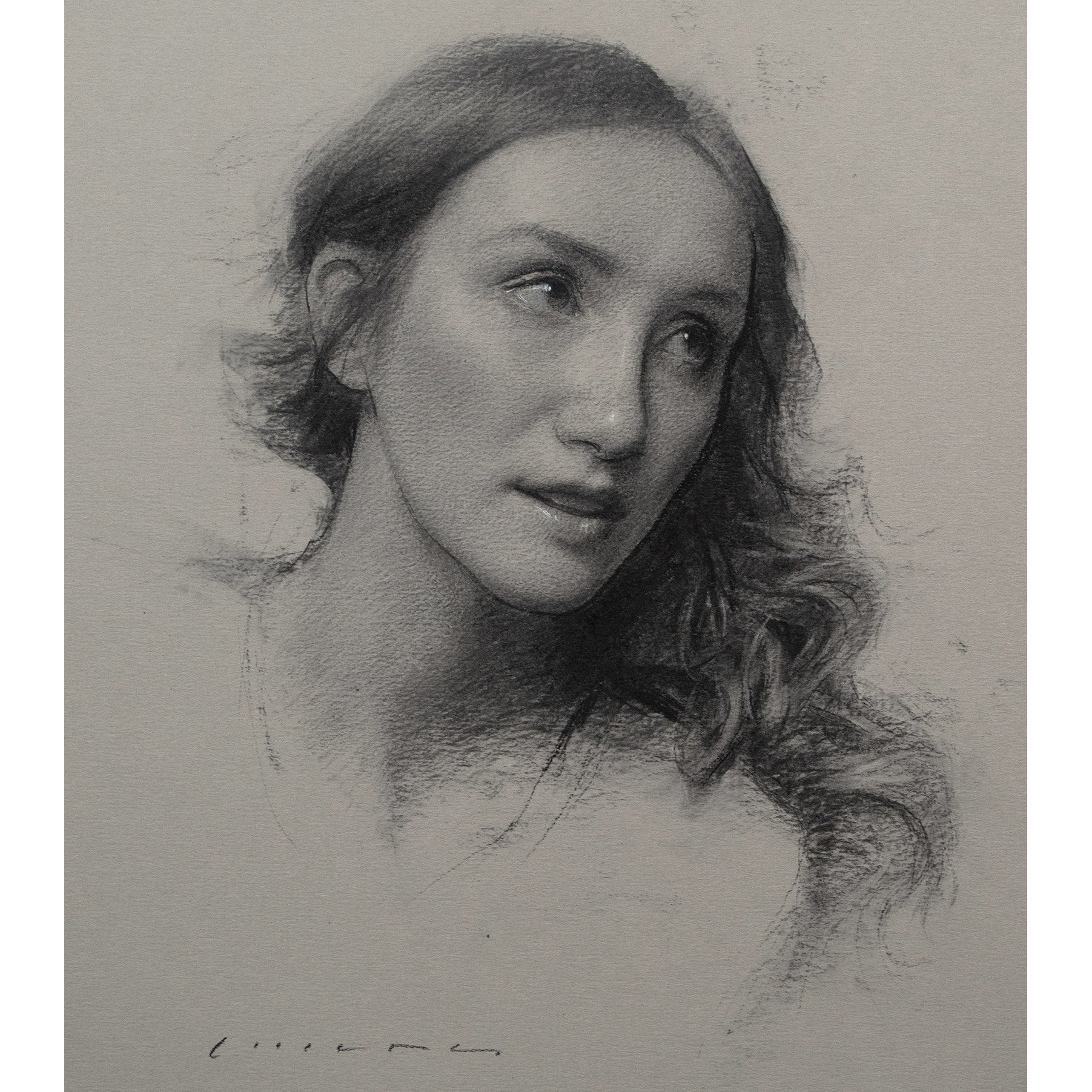The medium of charcoal is primal yet profound, offering artists the ability to render the depth of human emotion and the subtleties of individual features with simple tools. Mastering charcoal portrait drawing requires patience, practice, and an understanding of the fundamental techniques that bring a two-dimensional surface to life. This journey into the soulful world of charcoal portraiture will explore the essential materials, foundational techniques, the significance of light and shadow, and tips for achieving a lifelike representation of the subject.
Choosing the Right Materials
Selecting Charcoal and Paper
The first step in mastering charcoal portrait drawing is selecting the right materials. Artists have a choice between vine charcoal for softer, more malleable lines, and compressed charcoal for darker, more defined strokes. The paper’s texture and weight greatly influence the drawing’s outcome; rougher papers capture the charcoal’s grain, adding a textural quality to the portrait, while smoother papers allow for finer details. Opting for high-quality, acid-free paper ensures the longevity of the artwork.
Essential Tools for Shading and Erasing
Alongside charcoal and paper, several tools are indispensable for charcoal artists. A kneaded eraser enables precise control over light effects and can highlight or soften features with ease. Blending stumps and tortillons are crucial for smoothing and blending charcoal, allowing for the creation of gradients and subtle shifts in tone necessary for realistic depictions. Having a variety of these tools at hand empowers artists to experiment with texture and depth in their portraits.

Foundational Techniques
Building the Initial Sketch
The foundation of any great charcoal portrait is a solid initial sketch. Using light, easily erasable strokes, artists begin by mapping out the basic shapes and proportions of the subject’s face. This stage focuses more on accuracy and placement rather than detail, setting a roadmap for the subsequent, more intricate work. The use of geometric shapes to delineate the head and features ensures that the drawing has a balanced, realistic base.
Developing Depth with Shading
Shading is where the portrait begins to come to life, transitioning from a flat sketch to a three-dimensional representation. Mastering the gradation of tones, from the deepest blacks to the lightest grays, is crucial. Artists learn to observe where light naturally hits the subject’s face and where shadows fall, using charcoal to replicate these nuances. The contrast between light and shadow is what will eventually impart the drawing with volume and a palpable presence.

Light and Shadow: The Soul of the Portrait
The Role of Contrast
In charcoal portraiture, contrast is not merely a technique but the language through which the portrait speaks. High contrast draws the viewer’s eye to the focal points of the face—the eyes, the mouth—while softer transitions suggest the curvature of cheeks, the bridge of the nose, or the outline of the jaw. Understanding the interplay between light and shadow enables artists to not just capture the likeness but the mood and character of the subject.
Harnessing Light to Evoke Emotion
Light in a charcoal portrait does more than define form; it evokes emotion. Artists manipulate light to create a specific atmosphere or to highlight particular aspects of the subject’s personality. The direction and intensity of light can suggest serenity, drama, mystery, or joy, adding layers of meaning to the portrait. Experimenting with different lighting conditions is an exercise in understanding how light shapes our perception of the human face.

Achieving Realism: Tips and Tricks
Focusing on the Eyes
The eyes are often said to be the window to the soul, and in portrait drawing, they are the anchor of expressiveness and realism. Paying meticulous attention to the reflections in the eyes, the subtle shades around them, and the play of light and dark in the irises can bring a portrait vividly to life. The eyes set the tone for the entire piece, imbuing it with emotion and depth.
Continuous Practice and Study
Mastering charcoal portrait drawing is an ongoing process of learning and refinement. Continuous practice, coupled with the study of anatomy and the observation of people from life, sharpens an artist’s skill. Experimenting with different styles, subjects, and compositions, and seeking feedback from peers or mentors, fosters growth and confidence. Every portrait is an opportunity to explore the complexities of the human face and the diverse stories it can tell.

Refining Technique: The Path to Detail and Precision
Mastering the Art of Subtlety
The magic of a charcoal portrait often lies in the details that might initially go unnoticed but together breathe life into the artwork. Delicate wrinkles, faint dimples, and soft hairlines constitute a language of subtlety that demands a precise hand and a keen eye. Improving your ability to notice and capture these minute details requires consistent practice; each portrait is an exercise in observing and recording the little nuances that make each face unique.
Contouring and Texture
While mastering smooth gradients is essential, introducing texture adds another dimension to your portraits. Developing the skill to use the side of the charcoal to create skin pores or the fine lines of hair can add a surprising amount of realism to your work. Contouring the form of the face effectively is crucial too—shaping the cheekbones, jawline, and forehead with accurate light and shadow results in a more convincing depiction. This is where practice in observation pays off—being able to discern the details of how different lights play on various skin textures will allow for greater realism.

Stepping Back: Critical Evaluation and Adjustment
Self-Critique and Revising the Work
An essential part of the portrait drawing process is periodically stepping back to evaluate your work from a distance. Fresh eyes can often catch disproportion or areas that need more definition. This practice allows artists to assess their work more objectively and make necessary recalibrations. A successful charcoal portrait not only requires the technical ability to draw what you see but also the critical thinking to identify what needs reworking.
Capturing the soul through charcoal portrait drawing is a challenging yet deeply rewarding artistic endeavor. It combines technical skill with emotional intuition. Artists must master the medium. They also need to connect with their subject profoundly. Selecting the right materials is crucial. Understanding the intricacies of light and shadow is essential. Every step is an opportunity to explore the art form further. With patience, practice, and passion. Artists can unlock the expressive potential of charcoal. They can create portraits that resonate with vitality and depth.